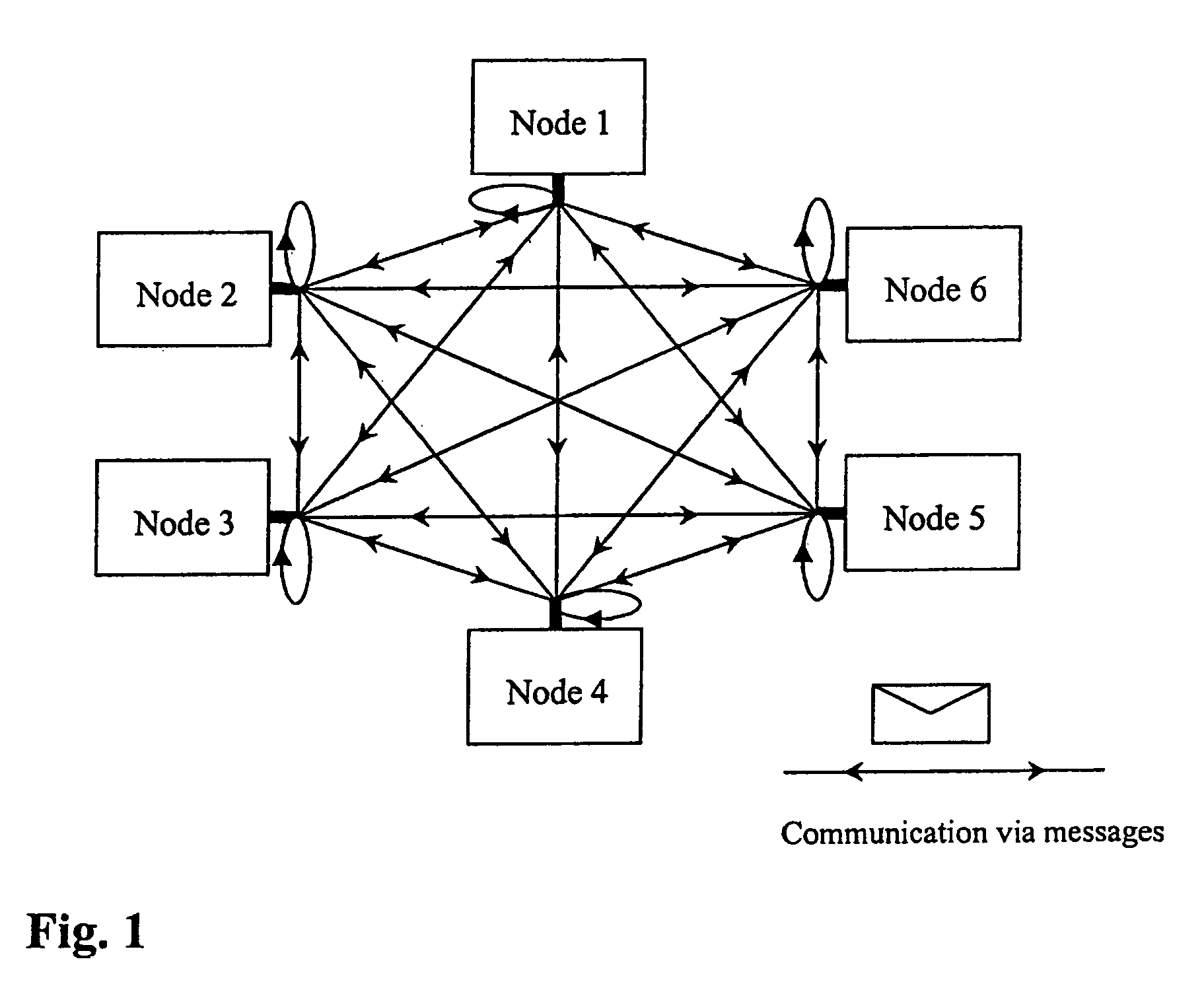Decentralised fault-tolerant clock pulse generation in VLSI chips
a clock pulse and fault-tolerant technology, applied in the direction of generating/distributing signals, pulse techniques, instruments, etc., can solve the problems of increasing the power consumption of the clock tree, the insufficient selection of low-tolerance quartz crystals alone, and the inability to control the clock pulse distribution. to achieve the effect of enhancing the stability of the global system clock puls
- Summary
- Abstract
- Description
- Claims
- Application Information
AI Technical Summary
Benefits of technology
Problems solved by technology
Method used
Image
Examples
Embodiment Construction
[0076]Based on the considerations discussed previously concerning the prior art technology, the virtually asynchronous or the GALS approach would have been very attractive if it had been possible to find a conceptually elegant solution to the problem with asynchronous communication between the synchronous islands. Thus, in addition, one should assume a structure consisting of locally synchronized functional units (modules) on one chip, these not being phase-synchronized to each other, but are frequency-synchronized to each other. Frequency synchronization in this context is concerned with matching the frequency of two or more clock pulse signals. Here, in contrast to phase synchronization, the period of time involved is larger. It is absolutely permissible that substantial phase shifts occur between the clock pulses during the interim period; however, what is decisive is that the number of phase changes in each time period under consideration may differ by not more than one a consta...
PUM
 Login to View More
Login to View More Abstract
Description
Claims
Application Information
 Login to View More
Login to View More - R&D
- Intellectual Property
- Life Sciences
- Materials
- Tech Scout
- Unparalleled Data Quality
- Higher Quality Content
- 60% Fewer Hallucinations
Browse by: Latest US Patents, China's latest patents, Technical Efficacy Thesaurus, Application Domain, Technology Topic, Popular Technical Reports.
© 2025 PatSnap. All rights reserved.Legal|Privacy policy|Modern Slavery Act Transparency Statement|Sitemap|About US| Contact US: help@patsnap.com



